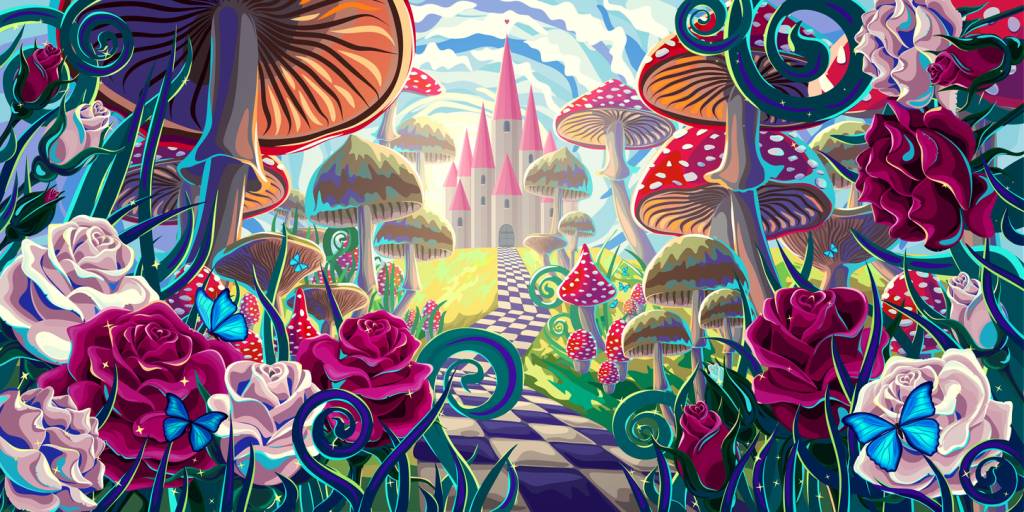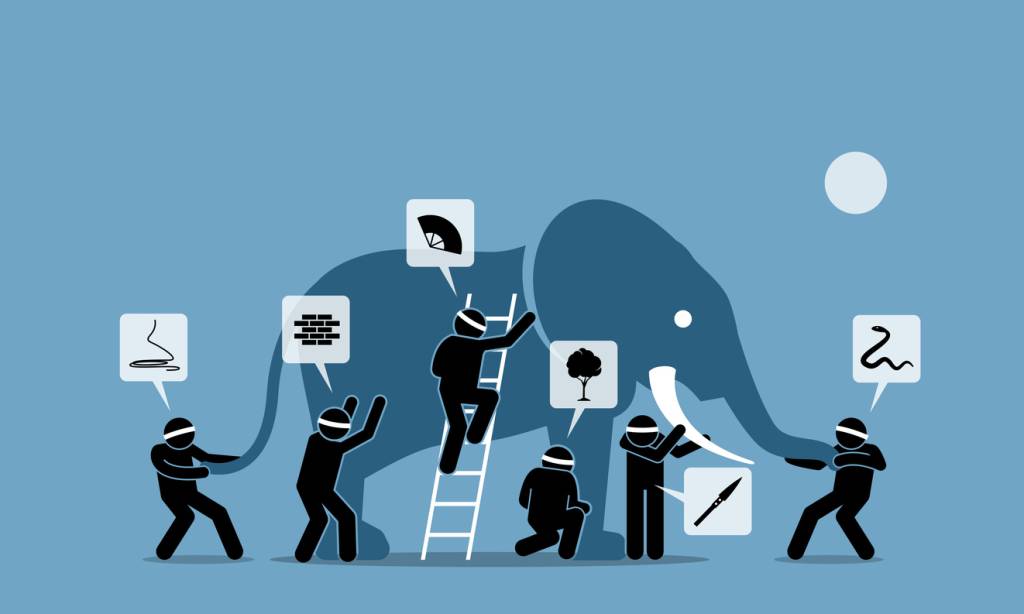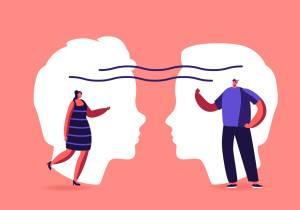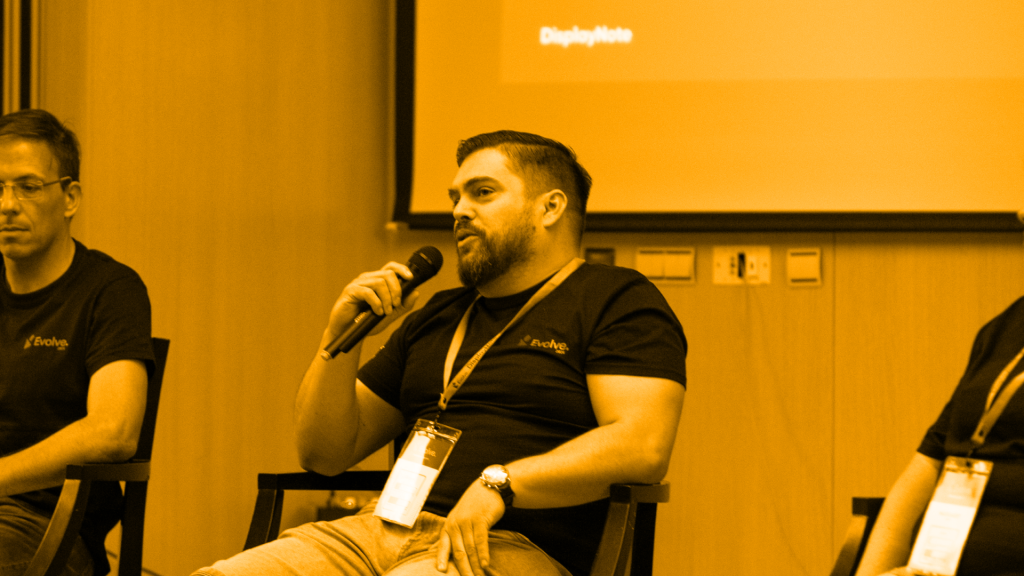
Want a deeper connection with your audience? Tell a story
 Julie Adams
•
Aug 10, 2022
Julie Adams
•
Aug 10, 2022
What you’ll learn in this post:
- The science behind storytelling
- Why the brain loves stories
- How to leverage the power of storytelling in your presentations
Can you think back to the most memorable talk or presentation you’ve ever experienced? What was it that stood out – the room? The speaker’s attire? The facts and figures? Chances are, it’ll be a story or analogy the presenter told. I’ll give you an example from a lecture I once attended in university.
The lecturer told the story as follows…One day, a group of blind men came across an elephant. They’d never come across an elephant before. So, using touch, each chose a different part and started to work on conceptualizing what this ‘thing’ was.
Each focused on a separate part; One found out everything he could about the leg, one decided on the trunk. One focused on the eye, while another looked at the head. Individually, they compiled a trove of richly detailed knowledge on their part of specialism. Are you picturing the image in your head right now? Blind men poking and prodding separate parts of a large animal. Good.
The men were then asked to describe the elephant based on their (limited) experience. Unsurprisingly, their descriptions of the elephant were different from one another. They came to suspect that the other person was being dishonest and came to blows.
The moral of this story is that humans have a tendency to claim absolute truth based on their limited, subjective experience as they ignore other people’s experiences – which may be equally valid.
My lecturer used this as an analogy for paradigms in psychology and how each perspective had its shortcomings when viewed in isolation. It’s also a pretty good analogy for disconnected departments in a company, unaware of the bigger picture that they’re working towards. This story has stayed with me. Chances are, there are stories that will have stayed with you too. But why is this the case?

When hearing is believing – The power of neural coupling
Neural coupling is the scientific process that happens in the brain when we communicate with another person. It involves a dual activation of similar brain regions for both the speaker and listener.
Scientists conducted fMRI observations on both speakers and listeners during a story and found that the speaker’s activity is spatially and temporally coupled with the listener’s brain activity. This coupling vanishes when participants fail to communicate. More interestingly, listeners’ brains can actually start to predict and anticipate parts of the story. This ‘anticipatory speaker-listener coupling’ is linked to story comprehension. I.e., when you’re truly engaged with a story, you understand and process the information better.
More character-driven stories have also been found to influence the release of the hormone oxytocin into the blood -which is aptly named the “empathy” hormone for its ability to help form bonds between people. If we feel empathy for a person, we’re more likely to trust them. If your audience trusts you, they’re more likely to engage and respond to what you say.

Are you forgetting something?
Have you ever walked out of a presentation and struggled to remember half of what was said? You’re not alone. Social scientist Ebbinghaus’s classic experiment on forgetting (1880-1885), yielded the “forgetting curve,” which describes the relationship between retention and time-since learning. According to his work, there was about a 44% retention rate after 1 hour.
We’re bombarded by so much information every day; it would be disadvantageous if we tried to process and recall all of it. Our brains are hardwired to filter out most of what’s coming in. For things to stick, we have to pay special attention (which is costly on our mental resources).
Alternatively, if the information is conveyed in a novel way that engages the emotional part of our brain (the amygdala), it’s more likely to be recalled.
Getting emotional is effective.
Emotion isn’t something we’d classically associate with educating your audience on a subject matter, say this quarter’s performance or a new product discovery – yet research has found that providing more information about a topic isn’t necessarily enough to change popular (but incorrect views). Creating a narrative may actually be more effective in engaging your audience and bringing about action.
Part of the pleasure that we derive from engaging with narratives lies in their potential to evoke mental images, which is known as ‘mentalizing.’ We don’t just process words at face value; we vividly experience what happens in the story by mentally simulating the narrative. We visualize what’s being described and even feel what the characters are feeling using our own minds.
When you begin to engage in a story, you’re frontal and parietal cortices are activated. These regions of the brain are associated with emotion and are often involved in our decision-making processes (despite how rational we might think we’re being). The neural effects that occur in these areas after a story can last for several days, which explains why a powerful story or film will stay with you.
What’s more, activation of these areas can also improve memory recall. Cognitive psychologist Jerome Bruner found that people are up to 22 times more effective at recalling facts when they are part of a story as opposed to being isolated data.
High action and tension in a tale evoke a stress response in the body, releasing cortisol, resulting in greater immersion and responsiveness. Using a story in your presentation won’t just make it more interesting; it’s likely to make your points more salient and memorable too.
What if I don’t know any stories?
How did you get into your current job? What happened to lead you to the position you’re currently in? Was there a time you felt like giving up but didn’t? I bet there’s a story there. The best stories are all about connecting seemingly disparate parts. Give people a challenge that needs to be overcome, an identifiable character, and a surprising twist at the end – and they’ll be hooked.
What’s more, research has found that the story’s truth or falsehood doesn’t necessarily matter; listeners are more concerned with the narrative. So, if you come across a good story online and think it’s applicable to the presentation you’re about to give, use it. Your audience will thank you for it.
When it comes to sharing your ideas, sharing your screen with your audience should be intuitive too – which is why we developed, Broadcast, our one-to-many screen sharing tool.
With Broadcast, you can share the content from your computer to your audience’s devices in real-time, meaning everyone stays on the same page – regardless of where they’re sitting on their level of vision. Plus, built-in annotation and screen capture tools mean you and your audience can add context and save the slides to your device for later.
This helps your audience to make their own connections with the material to achieve a deeper overall understanding.
Want to try Broadcast for yourself?
Want to stay in the loop?
Keep up-to-date with everything DisplayNote – including new releases, job openings, and customer giveaways.
Don’t worry, we’ll not spam you and we’ll never share your email with anyone







